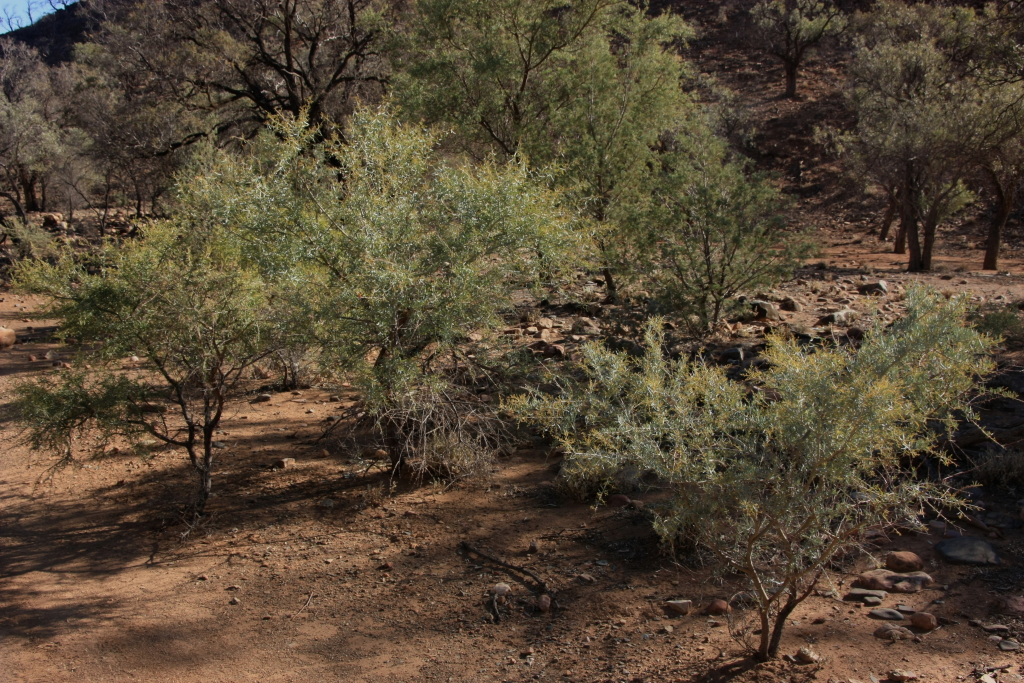Acacia victoriae subsp. victoriae
Shrub or tree, 2–5(–9) m high; branchlets glabrous or sometimes hairy, often pruinose. Phyllodes variable, linear to narrowly oblong, lanceolate or narrowly elliptic, c. 2–5 cm long and 2–8 mm wide and 2–13 times as long as wide, straight or incurved, green to grey-green or glaucous, usually glabrous; midrib prominent, lateral veins usually obscure; gland more or less basal, obscure or prominent; stipules spinose, commonly only bases persisting at mature nodes, 2–12 mm long. Inflorescences normally racemose but peduncles sometimes subtended by a secondary phyllode, rachis 1–10 cm long, slender; peduncles mostly twinned, 6–18 mm long, slender, glabrous, sometimes hairy; heads prolific, globular, 15–30-flowered, creamy-white to pale lemon-yellow. Flowers 5-merous; sepals free, narrowly spathulate. Pods narrowly oblong, to 8 cm long, 9–16 mm wide, chartaceous, glabrous; seeds transverse, more or less globose, 4–6 mm long, brown, mottled blackish, funicle short, thick and scarcely arillate. Flowers c. Sep.
LoM, MuM, Wim, MSB, RobP. Also WA, NT, SA, Qld, NSW. Restricted in Victoria to the far north-west and apparently near Rainbow. It usually grows in clay or loam on alluvial flats but also in sand.
The taxonomic status of A. victoriae subsp. arida Pedley requires further investigation. Specimens ascribed to this taxon have densely tomentose branchlets and phyllodes, and occur in Northern Territory, South Australia, Queensland and New South Wales. Hairy branchlets and phyllodes also occur in typical A. victoriae but the indumentum, especially on the phyllodes, is usually sparser. Intermediates occur between the 2 subspecies.
 Spinning
Spinning

